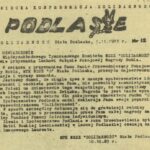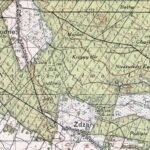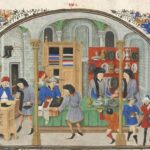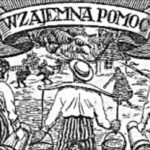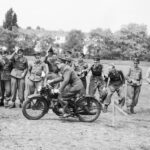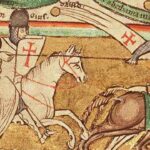The press of the “Solidarity” movement in Biała Podlaska
In the opposition fight against the communist regime, the writings of the Solidarity movement played an important role. In his article, Eugeniusz Wilkowski analyzes the content of the few preserved issues of magazines published in Biała Podlaska. Go to article
Clausewitz and the Linear Battle Order
The turn of the 19th and 20th centuries was a crisis of the linear combat formation. In our columns, Sebastian Chojnacki analyzes the influence of Claus von Clausewitz on this phenomenon. We invite you to read.
The destruction of the village of Jagodne
In 1953, the inhabitants of the village of Jagodne in Łuków County were forcibly relocated to the Recovered Territories and a military training ground was established in its place. Dr. Jacek Wysocki undertook to describe these tragic events and the consequences resulting from them. Go to the article.
The economy of the Łuków land in the Middle Ages in the light of sources
The economic history of the Łuków land in the Middle Ages can be divided into two periods: the 12th-14th and the 15th centuries. In each of them, the Łuków land developed differently, moving from an extensive economy to an increasingly dynamic one. Dr. Marcin Gomółka presents the factors determining the pace of this development, and the most important of them was the Union of Krewo concluded in 1385. This event resulted in the transformation of the Łuków land from a peripheral territory to one located in the center of the Polish-Lithuanian state. This resulted in changes of a settlement, economic and trade nature. Towns and villages were established, markets and fairs were established, agriculture, animal breeding and beekeeping began to develop. We invite you to read.
The goddess Venus, money and women of the Severans
In the presented article, Anita Smyk analyzes the iconographic and ideological aspects of coins issued by women from the Roman Severan dynasty, on the reverse of which the goddess Venus Felix is depicted. This allowed the author to determine the role of this Roman goddess in the self-presentation of women of the ruling family. Go to the article.
Communist crime in the “Baran” forest in the Radzyń Podlaski district
At the turn of 1944 and 1945, in the “Baran” forest in Kąkolewnica in the Radzyń Podlaski district, the Court of the 2nd Army of the “People’s” Polish Army murdered soldiers of the Polish independence underground. The locals called this place “Little Katyn” due to the method of eliminating victims, similar to Katyn, i.e. shooting in the back of the head, tied hands and mass burials. This article is the first attempt to scientifically describe these crimes. We invite you to read.
Co-operatives traditions of Łomża
We invite you to read the study by prof. Zofia Chyry-Rolicz on cooperatives in Łomża, covering the period from the end of the 19th century to the end of the 20th century. Go to the article.
An intellectual from the Polish People’s Army
After World War II, the communists ruling Poland sought to replace the elites through the extermination and social degradation of temporary and social advancement of their supporters. Its part was to consist of officers of the new, “people’s” Polish Army. Paweł Orłowski’s article describes the ideology of creating officer cadres in the Polish People’s Republic. Go to the article.
Exegesis of the biography of Zbigniew Braun
In the fall of 1947, Zbigniew Braun, a Home Army soldier from Radzyń Podlaski, a Warsaw insurgent and a prisoner of the German Stalag, returned to the country under communist rule. Summoned to the District Command of the Polish People’s Army in Biała Podlaska, he submitted his own biography in which he described his fate during World War II. Piotr Gorzelańczyk subjected this document to a critical historical analysis. We invite you to read.
Templars in Łuków
Was there a Templar commandery in Łuków? If so, where did they come from and how were they organized? This problem, in the light of Pope Alexander IV’s bull of 1257, is discussed by Marcin Gomółka in his article.
